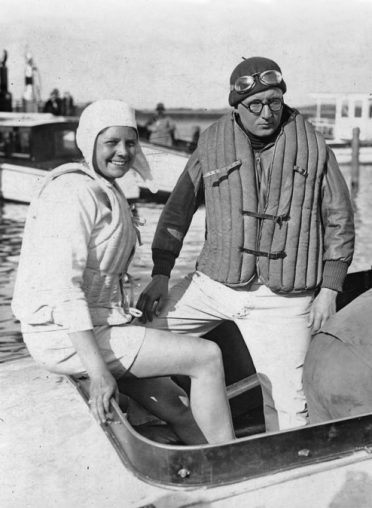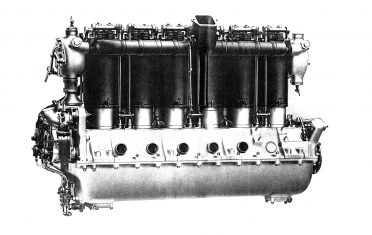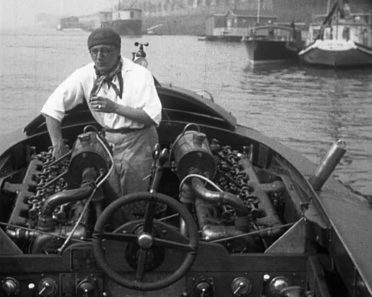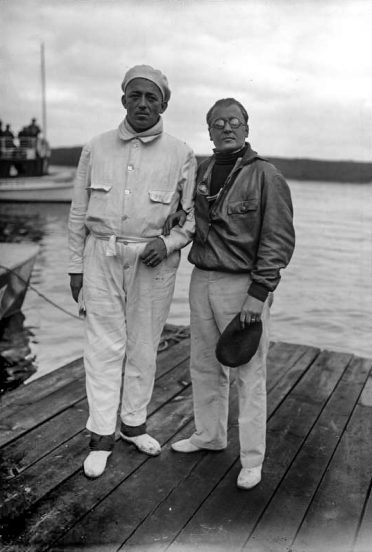He loved speed and scoffed at danger. Equipped with this attitude and loaded with dynamite, Fritz von Opel achieved worldwide fame. Opel fans have known about his pioneering RAK feats for decades. But very few remember his passion for water sports, or how successful ‘Rocket Fritz’ was in this field. Today, his spirited racing boat, the ‘Opel II,’ is all but forgotten. 2017 marks the 90th year since its greatest success – which is as fine an occasion as any to revisit this side of von Opel. But it’s easier said than done. Many of the documents are gone and records are incomplete, so there is still much historical research to be done.
What we do know is that, following major conflicts with the ONS (Oberste Nationale Sportbehörde, Germany’s highest sports authority at the time) in the summer of 1926, Opel was excluded from car racing until the end of 1927. The company withdrew entirely from all racing events. This decision may have motivated von Opel, who worked in the management at Opel, to explore new areas and acquire a racing boat.
The fastest motorboat in Europe
But not just any motorboat: Von Opel chose the ‘Namenlos,’ a ‘nameless,’ 10.5-meter-long hydroplane with two 260 hp Maybach airship engines. The boat, constructed in 1926 by Jupp Rüddel, the director of the Maybach plant, could reach a maximum speed of 106.2 km/h and an average speed of 101.2 km/h, making it the fastest motorboat in Europe and the second fastest in the world. After the purchase and without much ado, von Opel rechristened the Namenlos and started the water sports season in 1927 with his Opel II.

Acclaimed sportsman Fritz von Opel and outboard boat racer Helen Hentschel on board the Opel II, Templiner See, June 1928.

Drive system The 260 hp Maybach Mb IVa from 1917 was a successor to the 22.8-liter CX airship engine. More than 2,000 of them were built during World War I, many of which were later used as stationary engines or in cars and boats after the war. The Opel II had two of these on board.

Maintenance Fritz von Opel working on the two Maybach Mb IVa engines.
The Opel II entered its first race at the third International Motorboat Meeting on the Seine in the summer of 1927. It was the first time a German motorboat had appeared in France since the end of World War I, and it was a surprising success. Von Opel won with a clear lead ahead of the local competition in the unlimited category of the ‘Coupe de France’ on July 12. Just two days later, the Opel II was awarded the ‘Prize of the French Naval Minister,’ cheered on by the fair Parisian spectators. The final race of the day for the ‘Trophée de Paris’ ended in a definitive victory for von Opel. The German press went wild.
As the season went on, von Opel rose to several more widely acclaimed victories aboard the Opel II. He won the ADAC motorboat regatta on Lake Starnberg on 13 August, and the ‘Blue Band of the Rhine’ on 3 September. Von Opel became the German champion at the ADAC Motorboat Championship on Templiner See on 2 October. One week later at the same location, he became the winner of the fall races of the Berlin associations.
Daredevil acrobatics
Just a few days later on 13 October, von Opel made a splash once again – this time with some daredevil acrobatics. As the Opel II sped across Templiner See, aerial acrobat Fritz Schindler climbed up a rope ladder onto a flying RK 2a ‘Pelikan’ biplane and came back down again at 100 km/h shortly afterward. The daring stunt signaled a kind of transition from 1927 – an extraordinarily successful year for water sports – to 1928, the year in which von Opel devoted himself to flying and rocket experiments.
There are only two 1928 regattas on record in which von Opel participated. Despite engine problems, he was outpaced only by François Sigrand in the race for the German Grand Prix on Templiner See from 15 to 17 June of that year. One month later, von Opel pitted himself against an express train in front of several tens of thousands of spectators at the International Rheinfahrt from Mainz to Mülheim in Cologne. On the approximately ten-kilometer route from Porz to Hohenzollernbrücke, he beat the train by two-and-a-half minutes.
All traces have vanished
After this excursion on the Rhine, the Opel II seemingly vanished without a trace from records. Its owner acquired a number of other motorboats – the ‘Opel II’ with a DKW outboard engine and the ‘Opel IV,’ which went up in flames during a test drive near Bingen. Von Opel ordered two more boats in 1928 and 1929, but they were not equipped for racing.
The last boat to carry the von Opel name was christened in June 1933. The ‘Opel VIII’ was a motorboat that could reach a speed of nearly 60 km/h. It was entered into the motorboat race on Templiner See. ‘Rocket Fritz’ was not at the helm; his wife, Margot, took his place. That day, von Opel had turned his attention to another boat altogether: the MS Europa, on which he sailed away from Germany in the direction of Southampton in August 1933. He emigrated to the U.S., later moved to France, and later still to Switzerland, where he died in April 1971 at the age of 71.

On Templiner See Von Opel ceded the victory in the unlimited category to François Sigrand (left) and his boat, the Pah-Sih-Fou, in the major international motorboat race in June 1928. It was the Frenchman’s revenge for the Paris races in 1927.
Last updated: September 2017